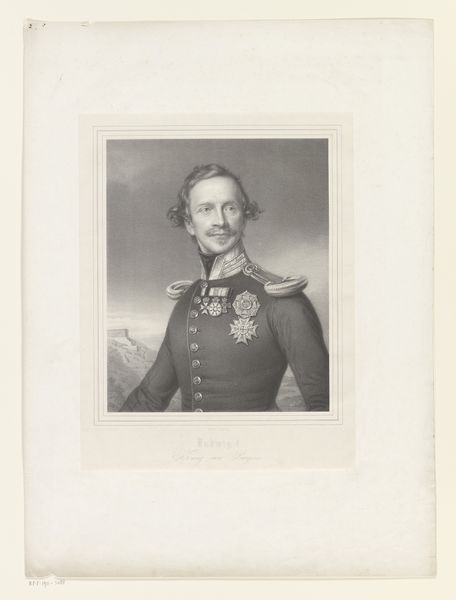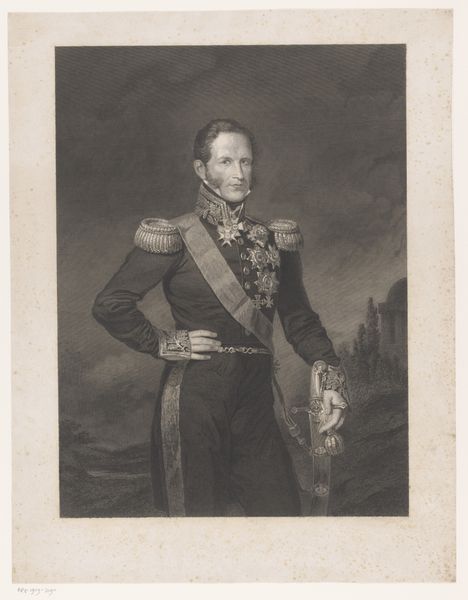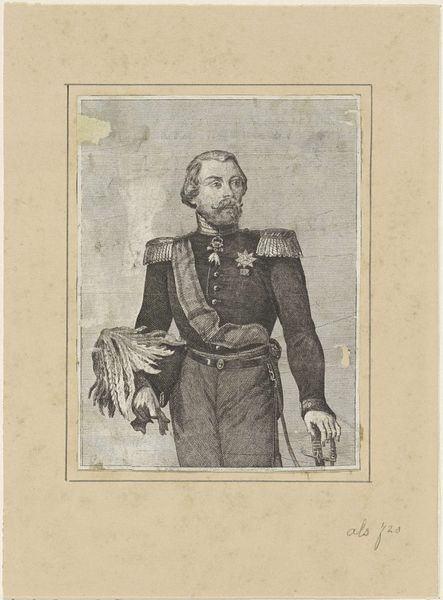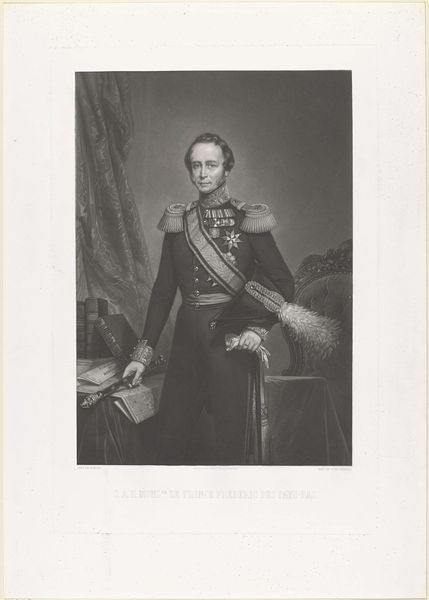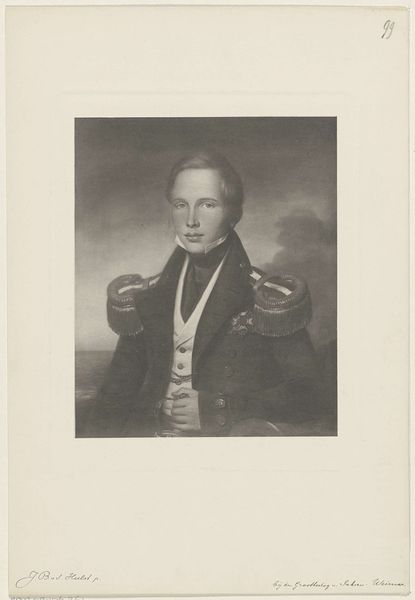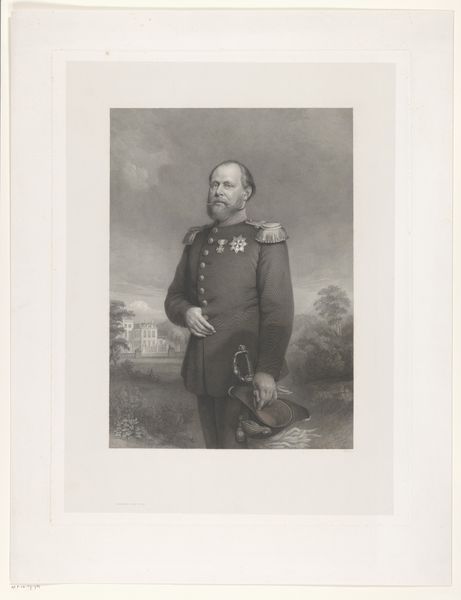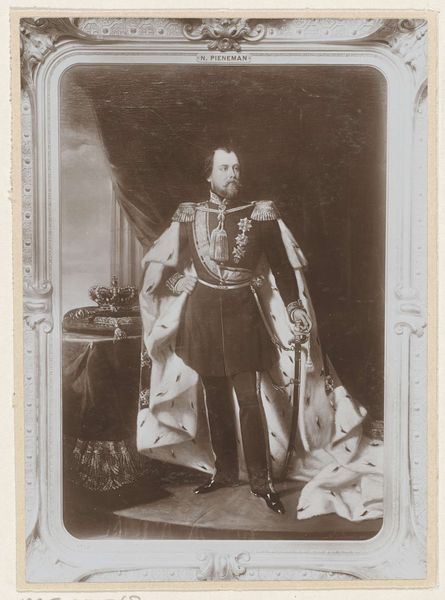
#
portrait
#
print photography
#
photo of handprinted image
# print
#
framed image
#
history-painting
#
academic-art
#
realism
Dimensions: height 480 mm, width 339 mm
Copyright: Rijks Museum: Open Domain
Benoit Taurel made this portrait of Willem III, King of the Netherlands, using lithography. This printmaking technique relies on the chemical repulsion between oil and water. The image begins with a design drawn on a stone or metal plate with a greasy crayon. After treating the plate with acid, it's inked, and the ink adheres only to the drawn areas. Then, the image is transferred onto paper. Lithography democratized image production in the 19th century, enabling the creation of detailed portraits like this. Consider the labor involved: from quarrying the limestone, to preparing the printing surface, to the skilled hand of the artist rendering the king's likeness. The texture of the print, with its subtle gradations of tone, creates a sense of depth, while the very act of reproducing this image speaks to the social and political power of the subject. By focusing on the materials and processes behind this artwork, we see how it reflects both artistic skill and broader historical forces.
Comments
No comments
Be the first to comment and join the conversation on the ultimate creative platform.
